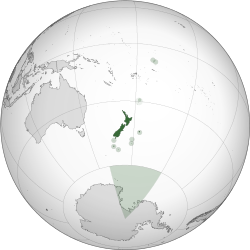Complete ecotouristic information database on national parks of New Zealand.
New Zealand is an island country in the south-western Pacific Ocean comprising two main landmasses  (commonly called the North Island and the South Island), and numerous smaller islands, most notably Stewart Island/Rakiura and the Chatham Islands. New Zealand is situated some 1,500 kilometres east of Australia across the Tasman Sea and roughly 1,000 kilometres south of New Caledonia, Fiji, and Tonga. Because of its remoteness, it was one of the last lands to be settled by humans.
(commonly called the North Island and the South Island), and numerous smaller islands, most notably Stewart Island/Rakiura and the Chatham Islands. New Zealand is situated some 1,500 kilometres east of Australia across the Tasman Sea and roughly 1,000 kilometres south of New Caledonia, Fiji, and Tonga. Because of its remoteness, it was one of the last lands to be settled by humans.
Cook Strait, 20 kilometres wide at its narrowest point, separates the North and South Islands. The total land area, 268,680 square kilometres. The country extends more than 1600 km along its main, north-north-east axis, with approximately 15,134 km of coastline.
The South Island is the largest land mass of New Zealand, and is divided along its length by the Southern Alps, the highest peak of which is Aoraki/Mount Cook at 3754 metres. There are 18 peaks over 3000 metres in the South Island. The North Island is less mountainous but is marked by volcanism. The highest North Island mountain, Mount Ruapehu (2797 m), is an active cone volcano.
Because of its long isolation from the rest of the world and its island biogeography, New Zealand has extraordinary flora and fauna, descended from Gondwanan wildlife or since arriving by flying, swimming or being carried across the sea. About 80% of New Zealand's flora is endemic, including 65 endemic genera. The two main types of forest are those dominated by podocarps and/or the giant kauri, and in cooler climates the southern beech. The remaining vegetation types in New Zealand are grasslands of tussock and other grasses, usually in sub-alpine areas, and the low shrublands between grasslands and forests.
A diverse range of megafauna inhabited New Zealand's forests, including the flightless moas (now extinct), four species of kiwi, the kakapo and the takah?, all endangered by human actions. Unique birds capable of flight included the Haast's eagle, which was the world's largest bird of prey (now extinct), and the large kaka and kea parrots. Reptiles present in New Zealand include skinks, geckos and living fossil tuatara. There are four endemic species of primitive frogs. There are no snakes and there is only one venomous spider, the katipo, which is rare and restricted to coastal regions. There are many endemic species of insect, including the weta, one species of which may grow as large as a house mouse and is the heaviest insect in the world.
This island country has recently become very attractive for many tourists. In spite of this trend, there are still many things to explore. The New Zealand is especially famous for its exceptionally beautiful, though often rough, landscape that millions of people could admire in the „Lord of the Rings“ trilogy.
Recently, New Zealand has a very well acting nature protection policy and all its parks are certainly worth visiting and admiring in calm.
Detailed information on New Zealand National Parks.
There is a database of this country national parks available. If you have any question or request you can send it by attached Informative Form.